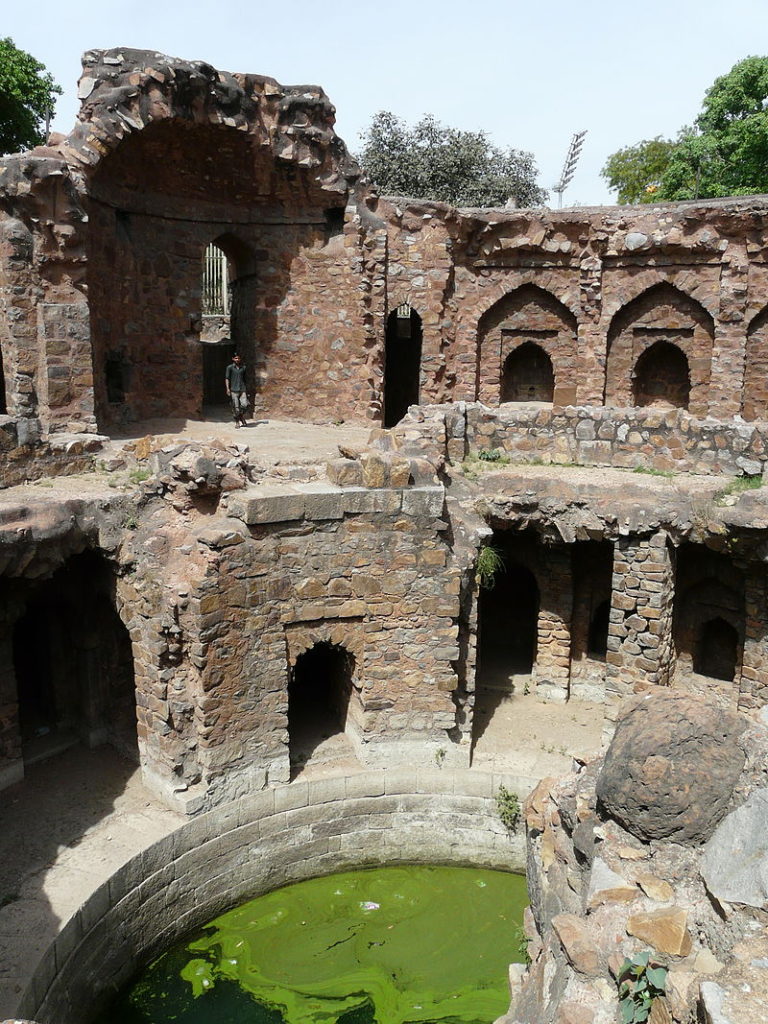
Water is a necessity for human sustenance. Many significant civilisations have originated and flourished beside the great rivers of the world. Our water conservation techniques have also evolved with time, though this evolutionary arc isn’t strictly linear, with the traditional approaches giving way to modern methods of water conservation..
Stories of rulers leaving behind their kingdoms due to scarcity of water are quite known; Fatehpur Sikri and Tughlaqabad are good examples. Almost all the rulers tried to establish their kingdoms near the banks of rivers; Delhi being a good example which became capital 7 times because of the Yamuna flowing through it. Due to this,, Delhi at one time had approximately 100 baolis, of which only 30 have survived. Many were lost over the years, while some were tracked down, preserved and refurbished.
A Baoli is a reservoir in which water can be stored and which acted as a great source of groundwater. Numerous tanks and baolis were commissioned by the ruling clans in which water was collected mainly during the rainy season and was then used throughout the year by the people in the neighbourhood. To build wells for water conservation was highly important as rivers were not everywhere and the level of water in a river also varied. However, to fetch water from these wells was a laborious job , so people constructed tanks which made the whole process much easier. In these tanks stairs were constructed which made the fetching of water easy and eventually these structures came to be known as Baolis. A typical Baoli consists of a well attached to a separate water tank or basin with a window. Tanks were made for general use like bathing, washing clothes etc; while wells fulfilled the drinking requirements of people.
The architectural form of a baoli mainly consists of three elements: the well in which the water is collected, the flight of steps to reach the groundwater through several stories, and intermediate pavilions.
The design principle used for Baolis is that both the Baoli and the well works on the simple process of sedimentation. While the well penetrates the confined aquifers, the walls of the baoli/ tank also allow the seepage of water through small gaps between the stones. This creates water pockets behind each such gap. Tiny water channels are created naturally after rains seep through the catchment area and interconnect the pockets. Mud, mixed with water, settles in the tank, and one gets clean water at the top. Some baolis were designed only for the purpose of water storage, others to provide shelter to travellers and caravans. These baolis were designed with rooms on the higher floors, with a dalan (colonnaded veranda) supported on columns. Such step-wells were also used as shaded spaces for social interaction where discussions could be held.
The oldest existing primitive form of baoli in Delhi – Anangtal in Mehrauli – was built in the tenth century by the Tomar king Anang Pal II. More appropriately called a tank, it was built when the city Lal Kot was founded. The Surajkund tank in Faridabad was built by Raja Surajpal Singh Tomar. These are some of the famous baolis that have been built by Hindu rulers, and this continued during the Sultanate and the Mughal periods.
Some important extant baolis in Delhi belonging to the Sultanate era include Gandhak ki Baoli; one of the oldest baolis of Delhi built by Iltutmish for Sufi saint Qutbuddin Bakhtiyar Kaki. The baoli is known as Gandhak ki Baoli because of its water which smells like gandhak, meaning sulphur. Another one, Rajon ki Baoli was built during the Lodi period and was a three-storeyed stepwell. Built as a four-level rectangular tank with steps at one end and a circular well at the other, the baoli also has long covered corridors or ‘dalans’ along the sides of the tank with arches beautifully decorated with incised limestone plaster. Apart from these the baoli at Purana Qila, Firoz Shah Kotla Baoli and and Baoli at Hazarat Nizamuddin’s Dargah are other honourable mentions.

The construction of the Baolis continued in the Mughal era as well. The 16th-century namely Arab Ki Serai complex was built by Hamida Bano Begum, the chief consort of Emperor Humayun, to accommodate 300 Arabs she had brought back from Mecca. The bazaar had rooms to store and display material and a baoli there provided water which was then constructed by the Mughal Emperor Jahangir as a harbinger of hope for water conservation.
Another honourable mention is The Red Fort Baoli constructed during Mughal Era by Mughal emperor Shah Jahan. . Hidden from the common sight and knowledge of many people, the ancient Baoli lies inside Red Fort’s complex, popularly known as Lal Qila Baoli.
The nineteenth century saw a fast decline in the use of step-wells as the British felt these to be unhygienic sources of water and started using pipelines. However, attempts have been made to revive some of the baolis and make people aware of the usefulness of baolis. The task nevertheless comes with a lot of challenges.
For example, to revive Agrasen Ki Baoli, near Hailey Road, Connaught Place, all the buildings around the baoli need to be abolished . Similarly, for the revival of the Kotla Mubarakpur Baoli destruction of shops, houses would be required. Moreover, any such action is riddled with the question of political consensus and also deal with land mafia.
Another big hurdle is the contamination of groundwater due to baoli restoration. Even if baolis are cleaned and disinfected, interconnected water channels will pump dirty water into them at all times.
A lot of these baolis like the Agrasen ki Baoli which is an Archaeological Survey of India protected site, have become tourist spots for a number of people, while others have fallen into a state of disuse and neglect.
Misbah Mehraj is a student of History at Lady Shri Ram College For Women.



Highly descriptive post, I liked that bit. Will there be a
part 2?